
views
Learning Basic Pronunciation

Loosen up your tongue. Before you start speaking, put your mouth in a relaxed position. For the most part, your lips and jaw, along with the rest of your face, should be at rest when speaking American English. Keep your tongue in the center of your mouth, just behind your two front teeth. To determine whether your mouth is in the right position, sigh. You should naturally make an “Uh” sound (As in “Love”) as you exhale. American English is spoken with “Neutral” mouth movements, and doesn’t include many harsh sounds or difficult oral techniques. EXPERT TIP Patrick Muñoz Patrick Muñoz Voice & Speech Coach Patrick is an internationally recognized Voice & Speech Coach, focusing on public speaking, vocal power, accent and dialects, accent reduction, voiceover, acting and speech therapy. He has worked with clients such as Penelope Cruz, Eva Longoria, and Roselyn Sanchez. He was voted LA's Favorite Voice and Dialect Coach by BACKSTAGE, is the voice and speech coach for Disney and Turner Classic Movies, and is a member of Voice and Speech Trainers Association. Patrick Muñoz Patrick Muñoz Voice & Speech Coach Americans don't move their mouths too much. When you start practicing, you should exaggerate your movements to use your mouth for all the sounds. Once you're more advanced, limit how much you move your lips for a more natural accent.

Enunciate each syllable clearly. Break down words into small units and say each one of them clearly. A word like “Spectacular,” for instance, would be enunciated as “Spek-tak-yuh-ler” When you get better at making the sounds individually, you can speed up and start speaking more fluidly. If you’re unsure how to break a word down into smaller syllables, listen to audio examples on YouTube or Dictionary.com. One of the defining attributes of standard American English is how distinctly each word is pronounced.

Pronounce vowel sounds loosely. Generally speaking, American vowels are “Wider” than they are “Tall.” This means that the corners of your mouth will be doing more work than your jaw. Try not to open your mouth too wide, or it may throw off your pronunciation. Most vowels will be formed from the front of your mouth (As in “Cheese” or “Fuel”). There are only a few outliers, including compound vowels in words like “Out” and “Always.” Watch the way Americans’ mouths move when they say common English vowel sounds and try to recreate these positions yourself.

Stress your “R” sounds. Keep your tongue in the center of your mouth and lift it slightly so that points toward your teeth (But doesn't actually touch the roof of your mouth). Purse your lips and let the sound emanate from your throat. Your mouth will return to this position every time you speak an “R,” whether the word is “Rock” or “Horticulture.” Unlike British, Australian, and other forms of English, American English is most often spoken with a hard “R” (With the exception being Northern dialects). An “R” sound provides the emphasis in every word of a sentence like “There are four birds.”
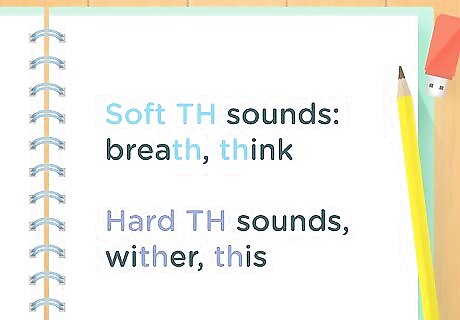
Master the different pronunciations of “Th”. Press your tongue against the back of your front teeth so that the tip is just slightly sticking out. Exhale through your teeth to make a soft “Th” sound. For a hard “Th,” keep your mouth in the same position, only this time vocalize the sound rather than using your breath for a more resonant effect. There are two different “Th” sounds in American English—the soft “Th” as in “Think” and “Health” and the harder “Th” used in words like “This” and “Mother.” Pay attention to the way native speakers sound out various “Th” words to get an idea of how each pronunciation is used.
Practicing an American Accent

Drill the words and sounds you find most difficult. Write down a list of words that are giving you trouble and spend a little extra time going over them. Don’t rush it—speak each word slowly, feeling out every part. Split complex words up into smaller parts that are easier to pronounce, then put them all together when the sounds start working with you. Make an effort to master 3-5 words from your list per day. Remember, the only way to get better at anything is dedicated practice.

Spend more time with native speakers. Talk to Americans every chance you get; since they’ve been speaking the language all their lives, they’ll provide the best example to follow. Try to absorb the subtleties of the language, making mental notes about what stands out to you and what you need to work on. If you have American friends, don’t be shy about asking them for help. They may be able to offer you useful tips and exercises for refining your accent. Pay attention to their other mannerisms, as well, like their facial expressions and what they do with their hands while they’re talking.

Watch American movies and television. If you’re unable to talk with a native speaker in person, your next best bet is to turn on the TV and find typical American movies and shows to watch. While you’re watching, repeat simple words and phrases to yourself, doing your best to imitate them exactly. Movies and TV shows make great guides because the dialogue has to be spoken in such a way that the viewer can catch it. Think of your daily viewing as homework. You’ll be learning and entertaining yourself at the same time—it’s a win-win!

Listen to American music. Play some recordings from notable American musicians and analyze the way they place emphasis on different words. You’ll notice that most words stay the same, even as they change them to fit the song’s rhythm. Since they tend to be sticky in your memory, songs can be useful tools for getting the particulars of another language down. Music will also expose you to other devices that are unique to American-style English, such as rhyme, similes, and metaphors. Use programs like iTunes or Spotify to stream songs so you can listen on the go. The catalogs of iconic American recording artists like Bruce Springsteen, Johnny Cash, Bob Dylan, and Elvis Presley are a good place to start.
Familiarizing Yourself with Different Dialects
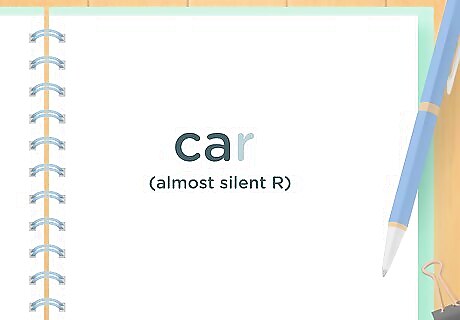
Make your vowels harsh to mimic Northern speakers. Switch the point of pronunciation from the front of your mouth to the roof. Elongate your vowel sounds and add a slight nasal inflection. Northerners also tend to be more lax in the way they pronounce certain consonants, particularly “R”s. In a word like “Car,” you might not hear the final “R” at all. It may be helpful to look at languages and dialects like Irish, Italian, and Polish to understand how Northern American English evolved.
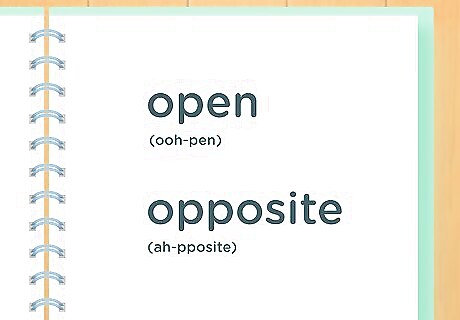
Talk like a Midwesterner. Rather than forming vowel sounds in your throat, let them come from the top of your mouth just under your nose, similar to a Northern American accent. Except for when you're articulating consonant sounds, keep your tongue near the center of your mouth. Speak with a brisk pace, but leave a little space between each word. Midwestern accents are recognizable for their nasal quality, as well as the way they "Shift" certain vowels (the "O" in "Open" sounds more like "Ooh," while the one in "Opposite" will sound more like a sharp "Ah"). To get the right intonation on your vowel sounds, draw your lips back just slightly like you're smiling.
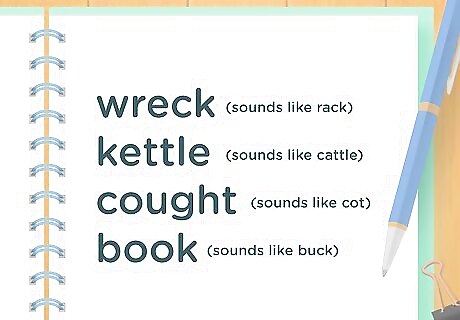
Try a Californian accent. For this dialect, you'll actually want to enunciate Less. Push your lips out slightly and hold your mouth open as you talk. Your words should escape with a kind of lazy uniformity, almost like your mouth is numb. For a more authentic delivery, let your "o" sounds trail off a little ("Ow-uh"). While not totally accurate, the stereotypical surfer and "Valley girl" accents commonly used in movies can give you a good idea of the unique spin Southern Californians put on the language.

Add some Southern twang. Draw out your vowel sounds into two separate parts, allowing them to rise and fall as you speak the word. Let your words run together a little and don’t put as much of an edge on them as you ordinarily would—Southerners are known for their easygoing drawl. Faking a Southern accent is all about getting the lilt down. In Southern English, a single-syllable word like “Wind” might come out as two or even three syllables (“Wee-yun-duh”). Southerners often leave the final “G” off of present tense verbs, so words like “Reading” become “Readin’.”

Learn a few slang terms. Identify the kind of slang that’s popular where you live, or in the region that you’re trying to imitate. Slang is like the final puzzle piece when it comes to pulling off a convincing accent. While it has no direct impact on your accent, you’ll sound that much more believable once you’re able to use it correctly. Add some of the most common slang terms used in American English to your repertoire, like "Chill," "Sweet," and "What's up?" Incorporate slang into conversation sparingly to keep it from sounding forced. Using the wrong slang (Or using the right slang at the wrong time) can give you away, and may even be considered rude. Hold off on working slang into ordinary conversation until you’re comfortable with its meaning and application.



















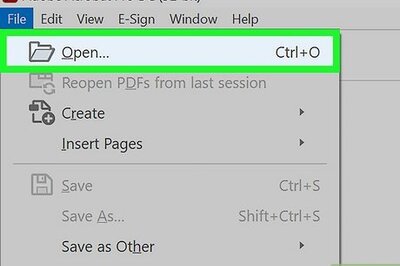
Comments
0 comment